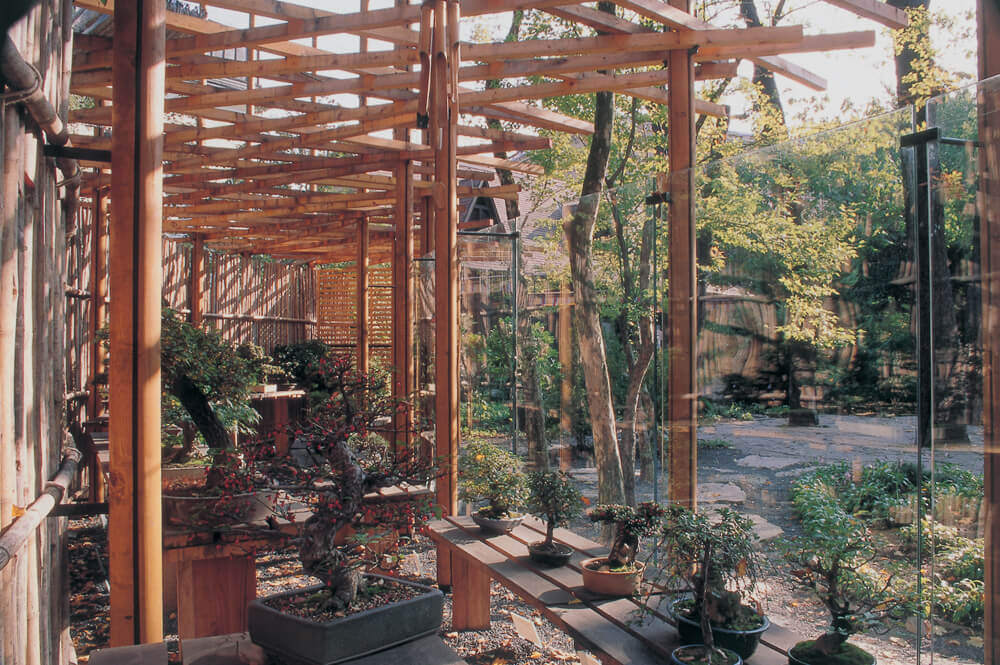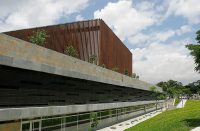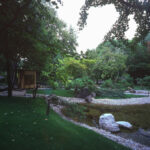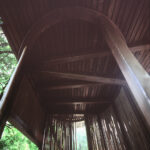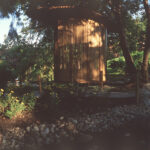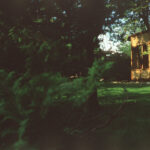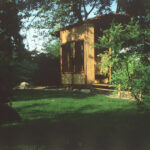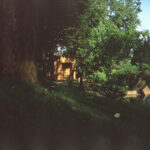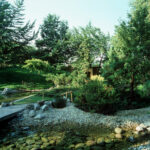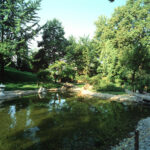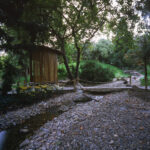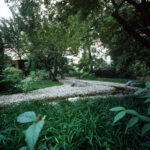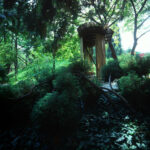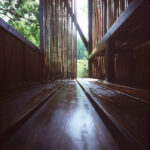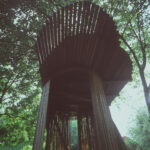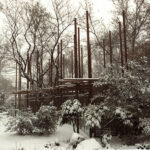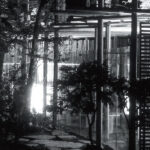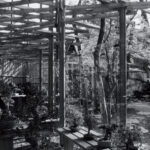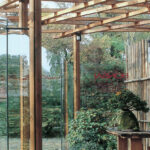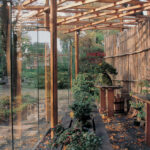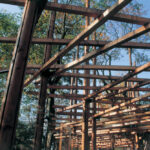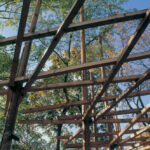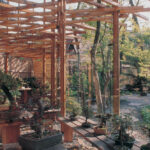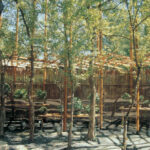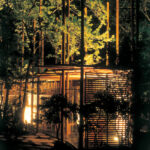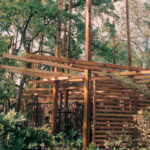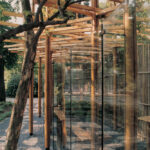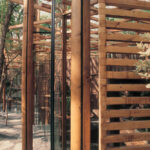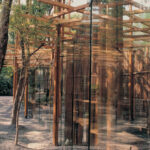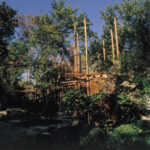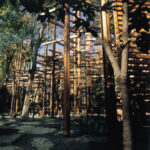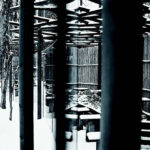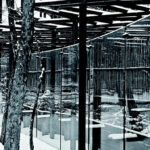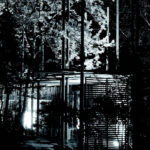Architect(s): PLANT - Atelier Peter Kis
Address: Állatkerti Krt. 6-12, BUDAPEST, Hungary
Latitude/Longitude: 47.517832,19.077799
Photographs: Attila Polgár | Edina Lisztes
The hill of the Japanese Garden was created from the debris of the Zoo and its surroundings after World War II. Initially there was an open air stage here, which however was unutilised for major parts of the year occupying this otherwise rather narrow area. The Japanese Garden was developed in its place and a park library was also in the plans, although it only operated for a few years. The Zoo made the decision to create a Japanese Garden in 1958.
During the almost ten years of the preparatory work the former stage hill was covered by grass, the topography of the area was established and the roads renovated. In 1966 pines and evergreens arrived from the Forest Research Institute as gifts, and then later we also have received seeds from Japan, from the Botanic Garden, Hokkaido University, the Aritaki Arboretum and the Nippon Shinyacu Institute for Botanical Research, Kyoto. At the time of the opening, the bank of the brook that dribbled down from the hill and then widened to a pond, was accessible from the higher area in front of the trees. The waterfall group of stones are to be found by the brook and Horai-island is located in the middle of the pond with the approaching “Turtle-stones”.
In 1998 a pavilion was built for the Hungarian National Bonsai Collection designed by the Atelier Peter Kis. In authentic Japanese gardens, bonsai are not held in a separate pavilion. For this reason, their sheltering edifice here, lacking any building-like character, mostly resemble a bamboo grove among the trees of the park. The frameless, curved glass wall winding between the posts is gives protection from incautious visitors. The background wall and the staged tablets follow the traditional forms of display. Wooden constructions placed on the lower level of the surrounding tree-crowns provide shade for the tiny trees. The basis of the collection exhibited here are partly a collection of twenty valuable trees, a present of the Aichi Province Group of the Hungary-Japan Friendship Society, as well as further trees donated from the Bonsai Club of Hungarian universities.
The garden was renewed again in 2000 based on the guidelines of Master Sugimura Fuimo. A new stone lamp (isodoro), a ritual handwash (csozobacsi), a knocker for deterring game (sisodosi) and a meditation pavilion positioned to provide the most beautiful views of the Japanese Garden were installed in addition to the rejuvenation, expert pruning and replanting of specimens. In 2002 three special registered trees arrived from Japan. Since the renewal of the Japanese Garden, the Urasenke Tea School from Kyoto visited several times to hold tea ceremonies and lectures here. In the spring of every year the Garden and the walks of the surrounding area are covered by the petals of the Japanese Flowering Cherries.
Text description provided by the architects.
Contributed PLANT – Atelier Peter Kis

